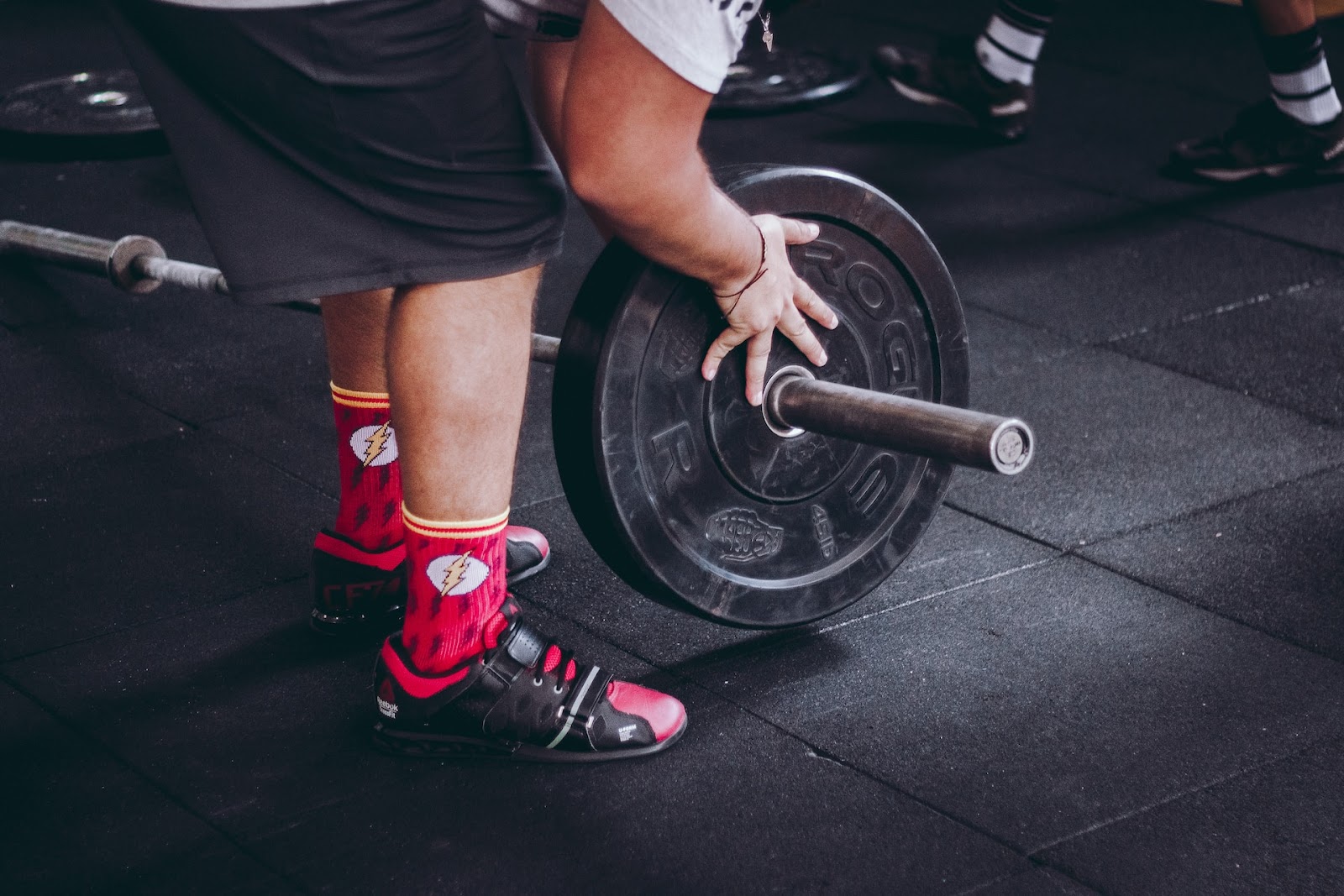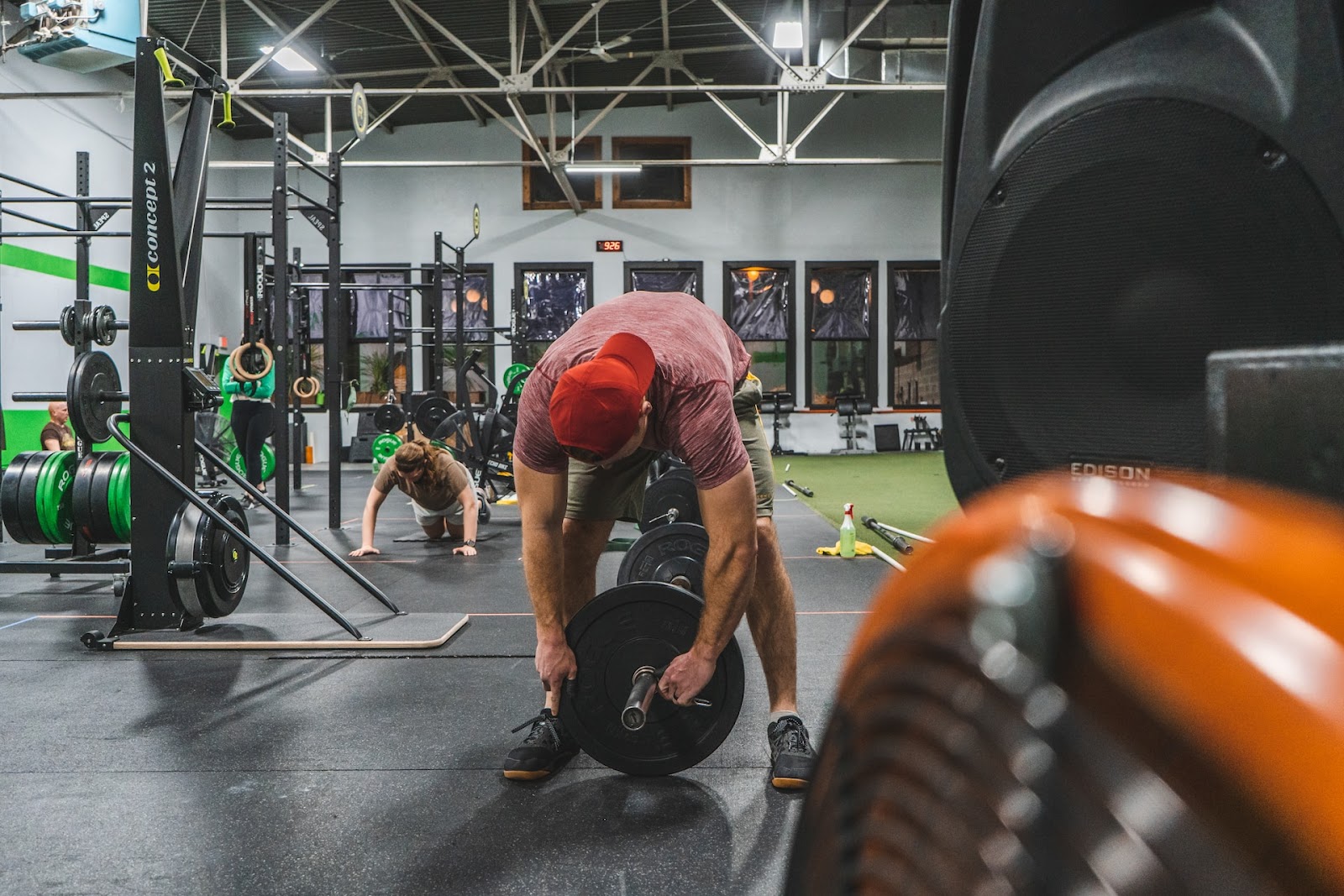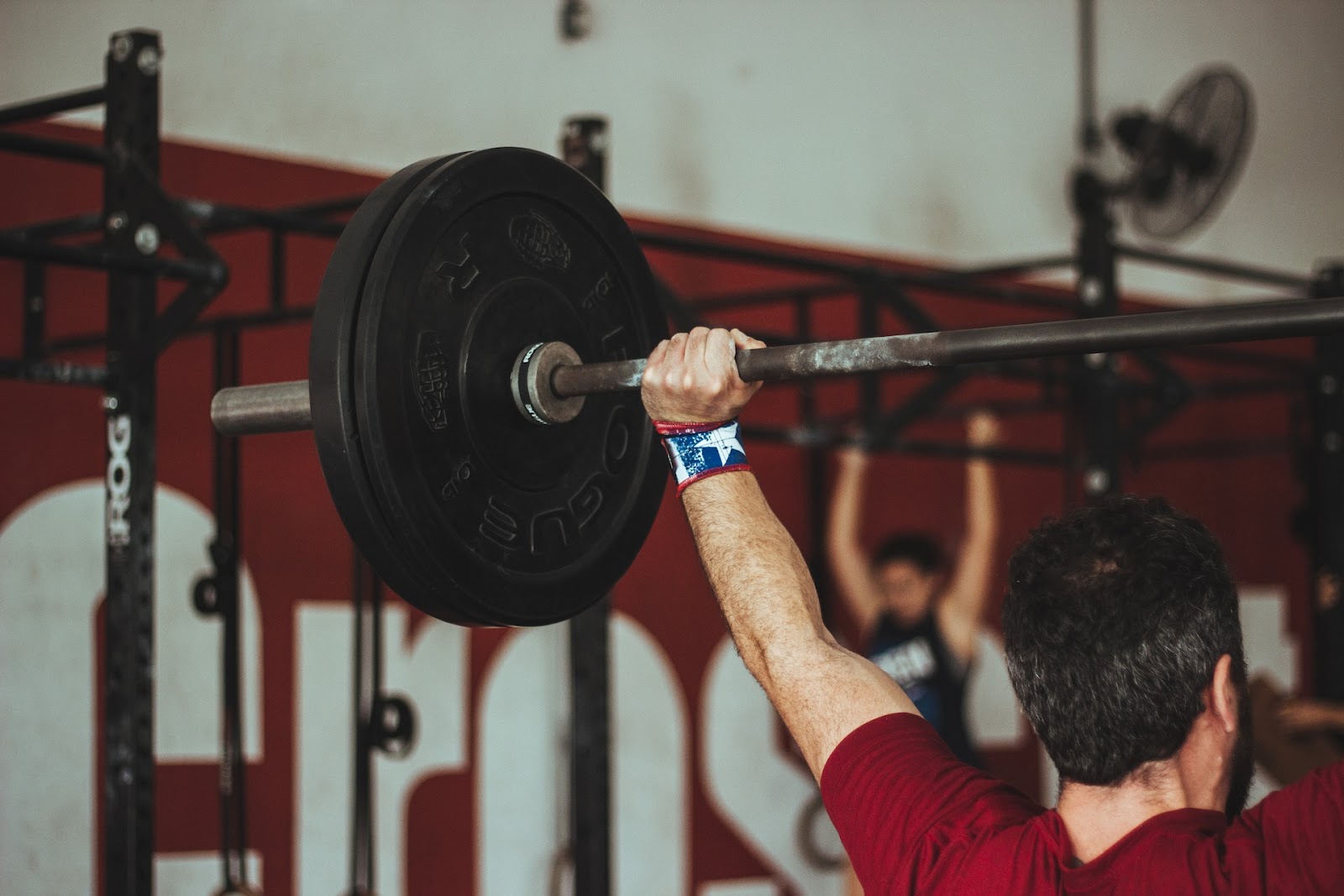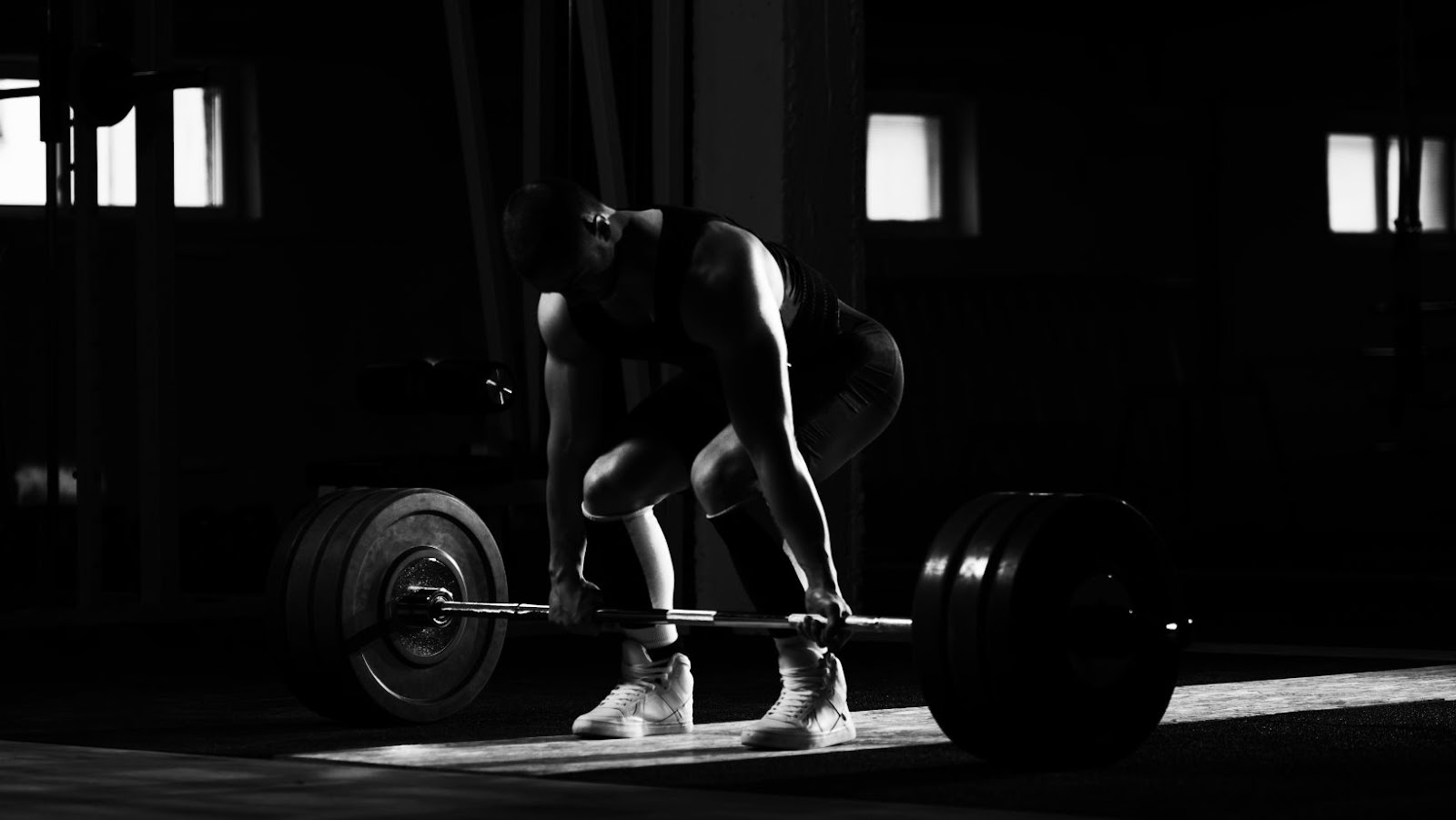Benefits of Barbell Deadlift
The barbell deadlift is a timeless exercise that has stood the test of time as a staple of any serious strength program. It is an exercise that focuses on the posterior chain muscles such as the glutes and hamstrings, as well as the mid and upper back muscles. This powerful lift helps to increase core strength, build muscle mass, and improve overall athleticism.
Let’s take a look at some of the benefits of the barbell deadlift and how it differs from the hex bar deadlift.
Understanding the Muscle Recruitment
Muscle recruitment refers to the number of muscle fibers that are activated during exercise. Barbell deadlifts are a great exercise to increase muscle recruitment and overall strength training. Here are some benefits of Barbell Deadlifts and some advanced techniques using a hex bar vs. the traditional barbell.
| Benefits of Barbell Deadlifts: |
| 1. Increased strength: Barbell deadlifts work several muscle groups, including the glutes, hamstrings, and lower back, which leads to increased overall strength. |
| 2. Improved posture: Deadlifts help improve posture by strengthening the muscles of the back and core. |
| 3. Increased fat burn: Deadlifts can aid in burning fat by increasing the number of calories burned during and after exercise. |
| Advanced Barbell Deadlift Techniques (Hex bar vs. Barbell): |
| 1. Hex bar deadlifts put less stress on the lower back and can be more comfortable for people with lower back pain. |
| 2. Barbell deadlifts require greater muscle recruitment and are best for building overall strength. |
Pro Tip: Make sure to maintain good form and start with lighter weights before trying any advanced techniques to avoid injury.
Pre-Requisites Before Performing a Barbell Deadlift
Performing a barbell deadlift is an effective way to strengthen your lower body muscles and improve your overall fitness. However, there are some necessary pre-requisites that you need to fulfill before performing this exercise safely.
Here are a few pre-requisites you need to follow:
| Pre-requisite | Description |
| Posture | Ensure that your spine is straight and your shoulders are back before performing a barbell deadlift. |
| Grip | Use the over-under grip or hook grip to grab the bar and maintain a secure grip throughout the exercise. |
| Warm-Up | It’s essential to warm up your body before any heavy-weight lifting exercises to avoid muscle strains and injuries. |
| Core Strength | Strengthening your core muscles can help improve your barbell deadlift form and prevent back injuries. |
| Footwear | Wear flat-soled shoes with good traction to maintain balance and stability during the exercise. |
Pro Tip: Start with lighter weights and focus on your form before gradually increasing the weight load to avoid injuries.
Proper Barbell Deadlift Form for Beginners
Proper barbell deadlift form is necessary to ensure that you can execute the exercise safely and effectively, without risking injury or strain.
Here are the steps to follow to achieve proper barbell deadlift form for beginners:
| 1. | Begin with feet shoulder-width apart, with the barbell centered over your mid-foot. |
| 2. | Bend down and grasp the barbell with both hands, palms facing down and hands shoulder-width apart. |
| 3. | Take a deep breath in, brace your core, and lift the weight using your legs, hips, and glutes, while keeping your back straight and your shoulders back. |
| 4. | Exhale as you reach the top of the lift, and then slowly lower the weight back down to the ground. |
The benefits of barbell deadlifts include developing strength in your lower back, glutes, and hips, building overall body mass and strength, and strengthening your grip.
Advanced barbell deadlift techniques, such as using a hex bar vs a traditional barbell, can further enhance the exercise and target different muscle groups, depending on your goals and fitness level.

Hex Bar vs Barbell Deadlift
Hex Bar vs Barbell Deadlift are two advanced barbell deadlift variations that have become increasingly popular. Both exercises are beneficial for building strength and power; however, they vary in their muscles attacked and technique.
In this article, we will discuss the differences between the two and the advantages or disadvantages of each.
Comparing the Mechanics of Both Lifts
Hex bar and barbell deadlifts are both popular exercises that target the lower body muscles, with a few key differences between them in terms of mechanics.
Here’s how they compare:
| Hex bar deadlifts: | This exercise involves using a hexagonal bar to lift weights off the ground. With a neutral grip position, the hex bar deadlift puts less stress on the lower back and allows for a more upright posture, making it a great option for beginners or those with back problems. |
| Barbell deadlifts: | The traditional barbell deadlift is performed with a straight bar and a mixed grip (one palm facing up and the other down). It requires more hip hinge and spinal flexion than the hex bar version, which puts more stress on the lower back but allows for more weight to be lifted and better activation of the hamstrings and glutes. |
Regardless of which variation you choose, proper form and technique are essential to avoid injury and get the most out of the exercise.
Pro tip: Consult with a certified trainer to determine which deadlift variation is best for you based on your fitness goals and physical abilities.
Understanding the Loading and Muscle Recruitment Differences
When it comes to deadlifting, there are two popular variations: hex bar and barbell deadlift. There are significant differences in muscle recruitment and loading patterns between the two variations that impact the effectiveness of your workout.
The hex bar deadlift puts your center of gravity within the frame of the bar, reducing stress on your lower back and allowing for more quadricep and glute activation. As a result, you’ll be able to lift more weight with a hex bar deadlift than a traditional barbell deadlift with less risk of injury.
The barbell deadlift places the load in front of the body, requiring greater posterior chain activation and grip strength. It also works the lower back muscles more as the center of gravity is shifted away from the body.
To maximize your deadlifting effectiveness, it’s recommended to incorporate both variations into your workout routine and to experiment with advanced barbell deadlift techniques such as pause deadlifts, deficit deadlifts, and sumo deadlifts.
The Benefits and Limitations of Each Lift
Hex bar and barbell deadlifts are both advanced techniques that are highly effective in building strength and muscle. While both lifts have their benefits, limitations also exist.
Hex bar deadlifts provide a more upright position, which reduces the stress on your lower back while still engaging your leg muscles. This makes it an ideal choice for beginners, those rehabilitating an injury or those who have a weak core. The downside to this technique is that as the weight increases, it becomes harder to maintain balance and control.
Barbell deadlifts require proper form and technique to execute safely, but they offer a whole-body workout experience that strengthens not only the legs but also the back muscles. Barbell deadlifts are especially beneficial for athletes and powerlifters. The downside is that they may put too much stress on your lower back, leading to injuries if not executed correctly.
To ensure you get the best out of both exercises, it’s advisable to switch between the two techniques to optimize the gains while minimizing risks.

Advanced Barbell Deadlift Techniques
When it comes to barbell deadlifting, there are plenty of advanced techniques to improve your performance. While the basic barbell deadlift is great for muscle building, there are several alternatives to the traditional barbell deadlift. Two of these are the hex bar deadlift and the alternating grip deadlift.
Let’s get into the details and compare the different pros and cons of each technique.
Deloading and Reloading Techniques
Deloading and reloading techniques are essential for those looking to master the advanced barbell deadlift techniques, especially when comparing using the hex bar vs barbell deadlifts.
Deloading is the intentional reduction of weight and volume in your training program to allow your body to recover and avoid burnout or injury. Reloading is the gradual increase of weight and volume after a deload, with the goal of building strength and performance.
When using a hex bar for deadlifting, the weight is more evenly distributed, allowing for increased lifting power and reduced stress on your lower back. However, using a regular barbell requires more hamstring and glute activation, resulting in increased strength gains and muscle growth.
To incorporate deloading and reloading into your deadlift training routine, decrease your weights by 40-60% for a week or two before gradually increasing them again. This technique allows you to avoid plateauing and achieve consistent progress in your deadlift training.
Using Chains and Bands to Strengthen the Lift
Using chains and bands is an advanced barbell deadlift technique that can help strengthen your lift and improve overall performance.
When using chains and bands, the resistance on the barbell increases as you lift, forcing your muscles to work harder throughout the entire movement. It also helps train your body to accelerate through the dead zone, which is the most challenging part of the lift.
To use chains, attach them to the ends of the barbell and adjust the length based on your strength level. As you lift, the chains will lift off the floor, creating an unstable load that challenges your stabilizer muscles.
To use bands, attach them to the barbell and anchor them to a stable object. The bands will provide an additional resistance to the lift, helping you develop explosive power and speed.
It’s important to note that these techniques should only be attempted by experienced lifters with proper form and technique. Consult with a certified trainer or coach before incorporating chains or bands into your deadlift routine.
Pro tip: Gradually increase the load of chains and bands to prevent injury and adjust according to your strength level.
Incorporating Box Squats and Sumo Deadlifts to Improve the Strength
Incorporating box squats and sumo deadlifts can be an effective way to improve the strength of your barbell deadlifts, especially when comparing hex bar vs barbell deadlift.
Box squats can help you develop explosive power and increase your range of motion, which translates into a stronger barbell deadlift. It also helps with your form, as you are forced to sit back and engage your glutes and hamstrings.
Sumo deadlifts work the inner thighs, glutes, and hamstrings more than the traditional deadlifts. By incorporating sumo deadlifts into your routine, you can better target these muscles, and as a result, see improvements in your barbell deadlifts.
When it comes to hex bar vs barbell deadlifts, the hex bar can be easier on your lower back due to the unique design that keeps the weight centered on your body. However, the barbell deadlift more closely mimics daily movements and requires more stabilization. It is essential to include both in your training and switch up your routine regularly to prevent plateaus.
Pro tip: Proper form is essential in any exercise, especially the barbell deadlift. Always start with lighter weights and focus on your form before trying to increase the weight.

Addressing Common Barbell Deadlift Mistakes
When it comes to the barbell deadlift, many people struggle to perfect the technique and get the most out of the exercise. It can be difficult to maintain the proper form and to know the best techniques for lifting when using a free weight barbell or a hex bar.
Let’s look at some common mistakes and how to address them.
How to Avoid Lower Back Injury Through Proper Form
To avoid lower back injuries while performing advanced barbell deadlift techniques, it is essential to maintain proper form throughout the exercise. Here are three common mistakes to avoid when performing barbell deadlifts and how to overcome them:
| Rounded back: | Avoid curving the lower back when lifting the bar off the ground as it can lead to strains or sprains. Instead, start with your hips low, your chest up, and your back flat. Look straight ahead and maintain a neutral spine throughout the lift. |
| Weak hips: | Weak or unstable hips can shift your balance when lifting heavy weights, leading to lower back injuries. To avoid this, use the hex bar deadlift to build strength and stability in your hip muscles. The hex bar deadlift targets the glutes, hamstrings, and quadriceps more efficiently than the barbell deadlift and can help improve your overall form. |
| Improper breathing: | Focusing on your breathing during barbell deadlifts helps maintain proper form and reduces the risk of injury. Inhale as you lower the bar, hold your breath while lifting, and exhale at the top of the lift to maintain stability and control. Remember, maintaining proper form is crucial in avoiding lower back injuries while performing advanced barbell deadlift techniques. |
The Most Common Mistakes and How to fix Them
When performing a barbell deadlift, there are common mistakes that can hinder your progress and result in injury. Here are some of the most common barbell deadlift mistakes and how to fix them:
| Mistake | Fix |
| Round back | Before starting the lift, pull your shoulder blades down, engage your lats, and maintain a neutral spine. |
| Using the lower back to lift | Use your glutes and legs to initiate the lift, keeping your chest up and maintaining a neutral spine. |
| Hex bar vs Barbell Deadlift | The hex bar deadlift puts less stress on the lower back and more stress on the legs, making it an attractive option for people with back pain. The barbell deadlift is a great compound exercise that targets several muscle groups, including the lower back, hamstrings, and glutes, making it a popular choice for powerlifters and strength athletes. |
By avoiding these common mistakes and implementing the correct techniques, you can achieve better results and reduce the risk of injury while performing advanced barbell deadlift techniques.
Tips and Tricks to Improve Barbell Deadlift Performance
To improve your barbell deadlift performance, it’s important to address common mistakes and learn advanced techniques. One common mistake is lifting with your back instead of your legs, which can lead to injury. Another mistake is not keeping a neutral spine, which puts unnecessary pressure on your lower back.
Here are some tips to improve your barbell deadlift:
| – Practice proper form by hinging at the hips, keeping your chest up, and driving through your heels. |
| – Engage your glutes and hamstrings to lift the weight, rather than relying solely on your back muscles. |
| – Use a neutral grip on the bar to reduce strain on your biceps. |
| – Incorporate hex bar deadlifts, which can be less stressful on the lower back and allow for a more natural grip and lifting posture compared to traditional barbell deadlifts. |
By incorporating these tips into your barbell deadlift routine, you can improve your performance and reduce the risk of injury.
